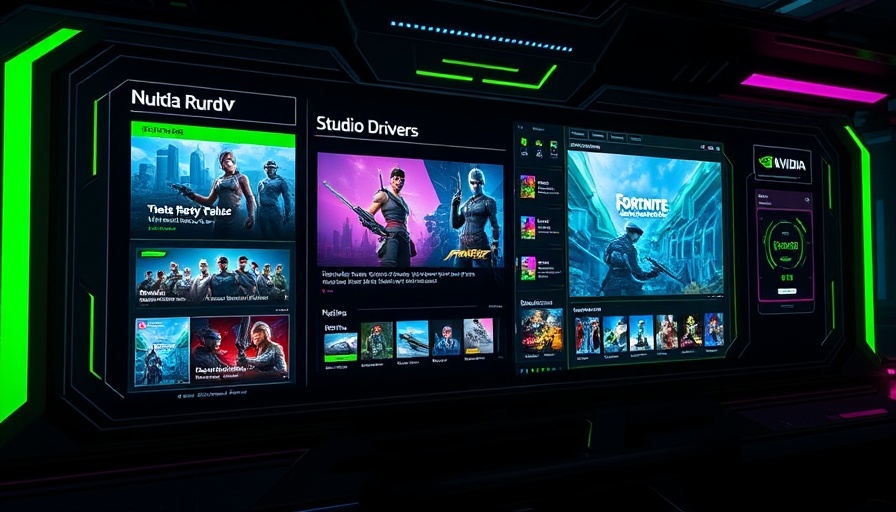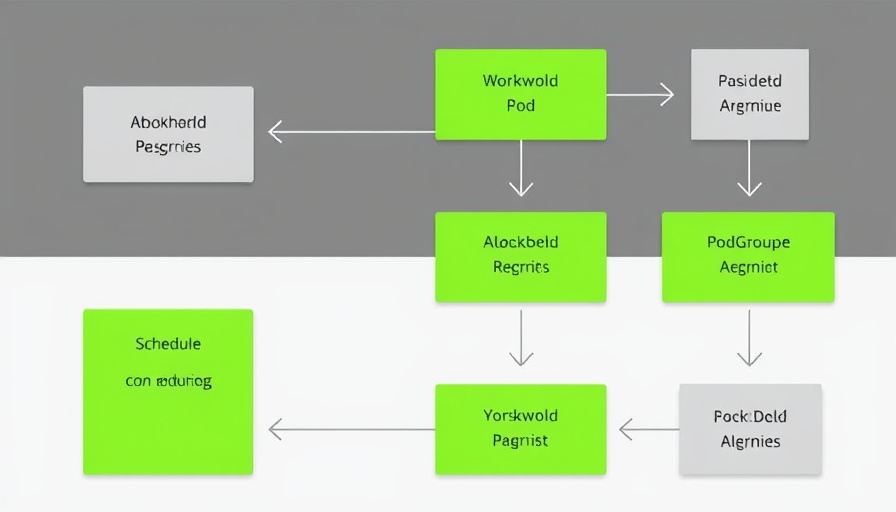
NVIDIA Driver Instability: A Serious Concern for Gamers
In recent weeks, a significant problem has emerged within the gaming community surrounding NVIDIA's latest driver release, version 572.XX. This has prompted developers to advise users against installing the update, primarily due to instability issues affecting older RTX 40 and RTX 30 series GPUs. While NVIDIA continues to make advancements with their products, there is growing frustration among users who find their gaming experience disrupted by crashes and performance issues associated with the new drivers.
Understanding the Issues Caused by Driver 572.XX
Reports have surfaced that the 572.XX driver is triggering substantial problems for gamers using RTX 40 and RTX 30 series GPUs. Game developers, such as those from inZoi and The First Berserker: Khazan, are vocalizing these issues, noting specific problems such as stuttering and frame drops. These drivers seem to create an unstable environment leading to frequent crashes and game freezes, effectively aggravating players who rely on these graphics cards for optimal gaming performance.
Recommended Driver Rollbacks
In light of these issues, developers are steering users towards using older drivers. The consensus is clear for RTX 40 series owners: roll back to v566.36, which has proven to mitigate the instability problems many are facing with the latest updates. For users with RTX 30 series GPUs, while instability isn't as commonplace, recommending the rollback to the previous version is still advised if they encounter any issues. As a side note, those with the RTX 50 series, while often unaffected by instability with 572.XX, face their own unique set of bugs that have yet to be acknowledged by NVIDIA.
Behind the Scenes: NVIDIA's Priorities
While drivers are the backbone of GPU performance, there is an increasing perception that NVIDIA isn’t prioritizing its gaming segment as it once did. The gaming division contributes a smaller portion of the company’s overall revenue, leading some to speculate that this negligence reflects a broader corporate strategy. As performance hiccups continue to mount, it raises concerns about how NVIDIA balances its focus between gaming and more lucrative markets.
Community Feedback and User Reactions
Feedback from the community has highlighted significant dissatisfaction, with users expressing their frustrations on forums and social media platforms. Many feel abandoned when drivers designed to improve their experience instead lead to detrimental outcomes. This sentiment amplifies the existing unease regarding the reliability of NVIDIA’s updates, calling into question the thoroughness of their testing protocols prior to release.
Looking Ahead: NVIDIA's Responsibility and Future Developments
The ongoing issues associated with driver 572.XX signal a critical junction for NVIDIA as they grapple with responsibility towards their dedicated gaming audience. With increasing competition in the GPU market, ensuring user satisfaction through timely updates and robust support is essential. The lack of acknowledgement from NVIDIA regarding the turmoil brought on by their latest drivers poses a potential risk for their reputation among consumers and could influence future purchasing decisions.
User Strategies for Optimal Performance
For gamers currently experiencing difficulties due to the unstable drivers, here are a few strategies to consider:
- Rollback to stable version 566.36 or previous versions known for their stability.
- Monitor forums and community insights for any news on drivers that resolve issues.
- Stay informed on patches and updates from NVIDIA that may address current problems.
Being proactive in managing drivers could save users from potential headaches and ensure a smoother gaming experience.
As graphics technology continues to evolve, understanding the implications of driver changes will remain crucial for gamers aiming for peak performance.
Conclusion: The Importance of Communication
In conclusion, communication between NVIDIA and its gaming community has never been more critical. Addressing user concerns and adapting strategies around them can enhance trust and satisfaction. Gamers expect reliable performance, not just groundbreaking technology, and it’s up to NVIDIA to deliver on these promises.
If you are facing issues with driver 572.XX, consider rolling back to the recommended driver and stay engaged with the community for further developments. Your gaming experience matters—ensure it stays optimal.
 Add Row
Add Row  Add
Add 




 Add Row
Add Row  Add
Add 

Write A Comment